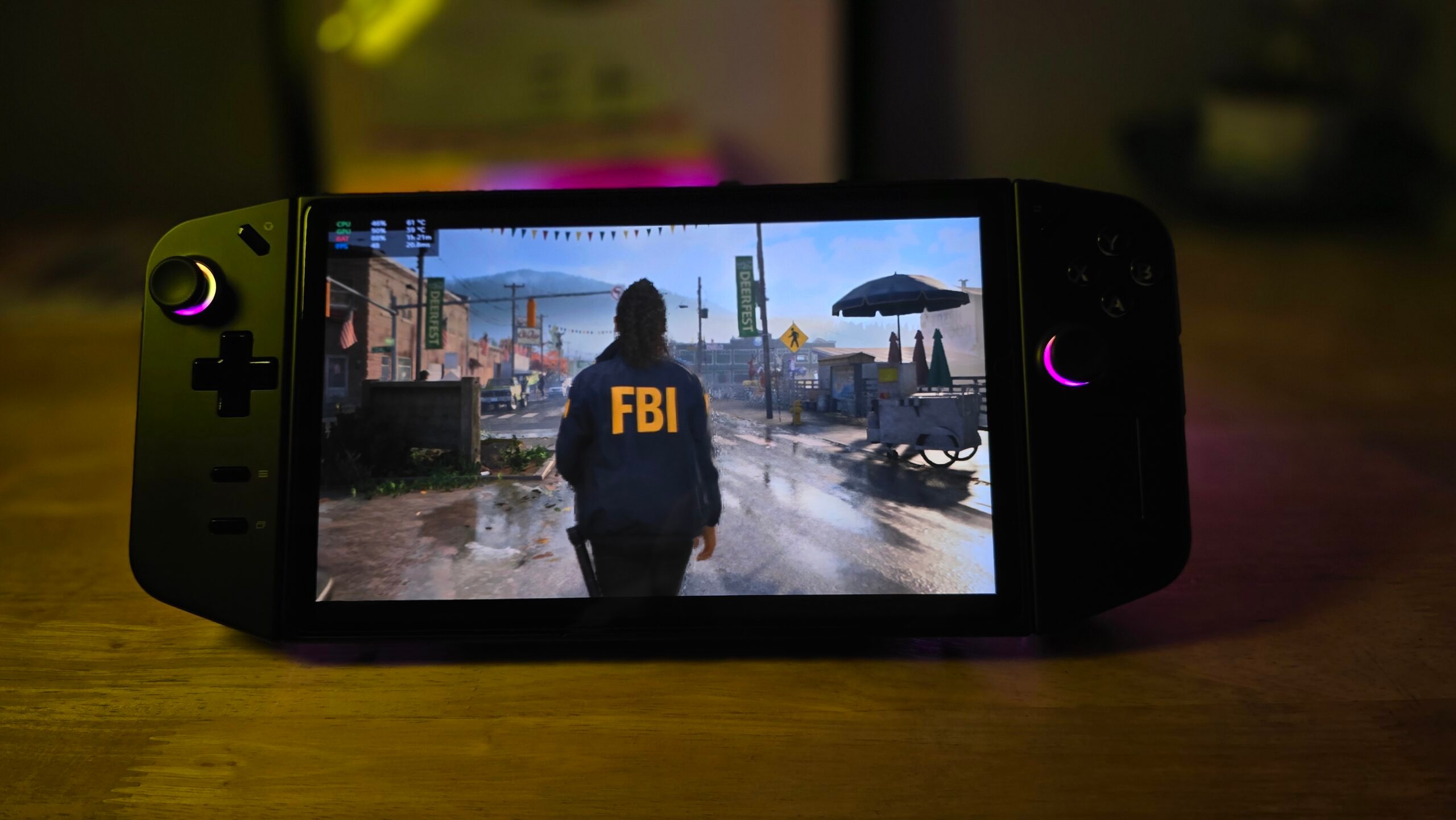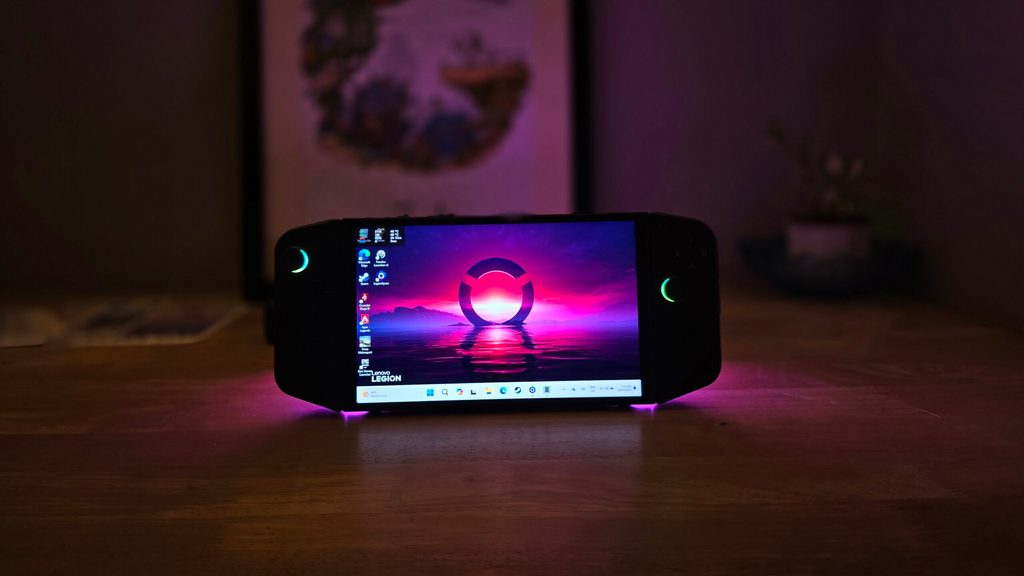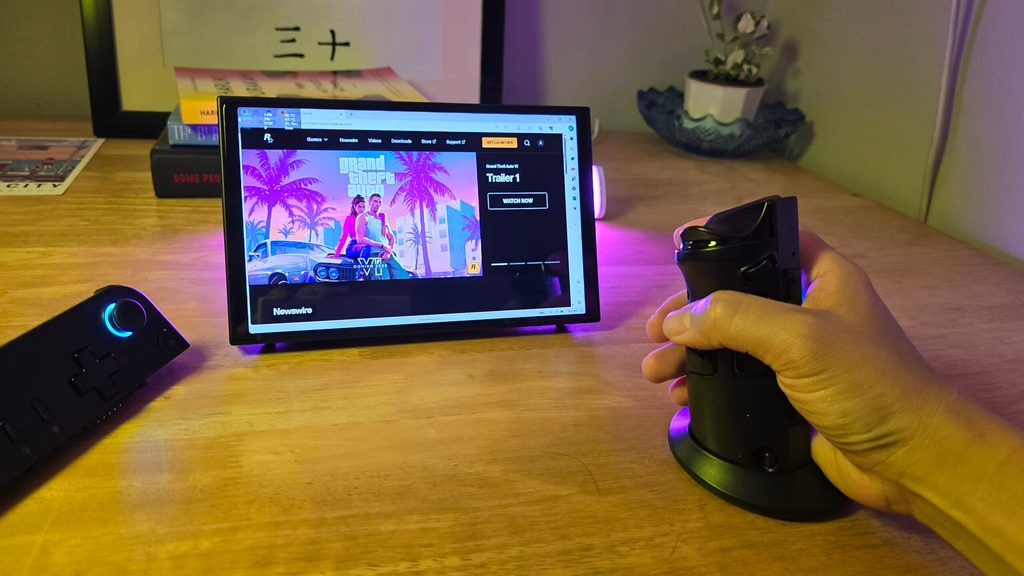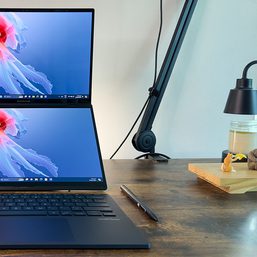SUMMARY
This is AI generated summarization, which may have errors. For context, always refer to the full article.

Disclosure: Lenovo lent a unit for this review.
MANILA, Philippines – 2022’s Steam Deck has seen some success, enough of it that it has jump started a sort of new-ish product category: handheld gaming PCs.
There had been attempts more than 10 years ago to make a portable PC gaming experience. A little digging reveals the crowdfunded Linux-based OpenPandora of the late 2000s, made for homebrew games and emulators. In 2013, there was the far more mainstream Windows 8-based gaming tablet that slotted into a controller device, the Razer Edge.
Brave efforts, but these were merely the first evolutionary steps for a new organism looking for its place in the gaming ecosystem. And the Steam Deck appeared to be its eureka moment, having found its niche, resulting in units sold in the “multiple millions.”
More than the sales numbers, the Deck has had quite the market impact because, in its wake, several household PC gaming brands have put forth their own attempts at a PC handheld: the ROG Ally, Lenovo Legion Go, and the MSI Claw.
These brands sell gaming laptops. The Steam Deck presented a threat. They had to get on the boat. And so we consumers find ourselves at an exciting moment where the brands are still trying to find out the best configuration, and we get to enjoy a bunch of wild choices.
There’s of course the sensible Steam Deck, the most affordable, designed for just enough power for an unplugged portable gaming session. Then the ROG Ally upped the ante with more processing power, and brought Windows to the fray (the Steam Deck uses the Linux-based SteamOS).
Then the Lenovo Legion Go came along, just supersizing everything – the display most of all. It has the biggest display of them all, including the upcoming MSI Claw. It’s that dinosaur that chose to go big in an attempt to eat everything that moved in the Cretaceous.

It’s the XL choice in the current crop of handheld PC gaming systems. I have no point of comparison as I haven’t tried the other systems, but all I can say is that while it is still portable, the most comfortable way to play it for longer sessions is to have your arms propped up on a table or legs while playing. It’s a big device.
It has the biggest display among all the devices at 8.8 inches, with the highest resolution at 1440p, and a 144Hz refresh rate. MSI and ROG’s devices have a 7-inch Full HD display at 120Hz, while the Steam Deck OLED has a below full HD 800p screen at 90Hz. Colors look rich, the dynamic range looks satisfying, and it looks very crisp.
Beyond just screen size, the Legion Go is also quite possibly the boldest and most inventive right now. It has detachable controllers like the Switch. (And speaking of the Switch, this PC category probably owes a lot to the Nintendo console too.) You can also take the right controller, put it in a magnetic, disc-like apparatus included in the package to let you use it as a mouse for first-person games. It’s pretty neat, but I can’t say yet whether it’s something that I can really get acclimated to.

I also like the built-in kickstand, and the included case even has a tiny hole through which you can course the charging cable, so you can charge it while in its enclosure – so that’s really thoughtful.
The ROG Ally, as I’ve read, doesn’t come with a case. The Steam Deck does.
Solid hardware, but future versions need a specialized user interface
The Legion Go and the ROG Ally share the same APU (accelerated processing unit): the AMD Ryzen Z1 Extreme. There are lots of in-depth performance reviews already out there. But a quick search on the ROG Ally subreddit compares the Z1 to being a tad below 2020’s high-end Ryzen 5800X CPU with the graphics prowess of 2019’s midrange Nvidia GTX 1650 GPU.
You have to dial things down a bit for the latest AAA games for this generation of PC handhelds. For example, a demanding game like Alan Wake II, per our testing, had to be dialed down to about an 800p resolution or slightly below for it to be a playable 30 frames per second.

As is the case with laptops, you’ll have your best chance of hitting high frame rates on less demanding esports-style titles or older games, so you can take advantage of the 144Hz display.
The MSI Claw, expected to come out before the first half of 2024 is over, will be introducing Intel chips to this product category, with the newer Intel Core Ultra 7 155H. We’ll have to wait and see which is better.
OS, some bugs
What the three devices need the most right now though is on the OS side. Windows 11 on these devices isn’t that user-friendly. The icons are tiny, there’s just a bit of a learning curve to get acclimated, and while the Legion Go has made some efforts with its own app that lets you quickly access the popular game storefronts such as Xbox, Steam, and Epic, it’s not quite there yet.
The overall experience before you get to jump into a game is not yet completely intuitive – understandable since this is new territory. It more or less feels like a shoehorned Windows 11. It’s not intuitive to access functions like alt-tabbing or ctrl-alt-deleting. The virtual keyboard didn’t automatically pop up on the Epic game launcher.

The OS acts up sometimes, and simply stops responding. Often, if you’re a laptop user, you’d know what to do to resolve things, but here it can be a little more frustrating because, first and foremost, you don’t have a traditional mouse and keyboard to work with. Sure, you can attach one, but that just takes you closer to laptop territory, so I think, long-term, UI polish is the key.
Once you get into a game, though, the experience is pretty stable, although there were three games – Hades, Psychonauts 2, and Alan Wake II – that sometimes didn’t detect the controller, and switched to a keyboard configuration. I needed to restart those games, and I’m not sure how many games are affected by this.
It can be done, but the overall polish, especially on the software side, needs improvement.
Maybe wait for the second generation devices?
But there’s indeed potential here for these devices to be quite impactful like the Switch, which proved that graphical horsepower isn’t all there is to gaming. Might this new PC form factor do the same to a platform that has always called itself the master race?

I’m excited that this is something that would be easier to take around, or play while in bed. This coming year is one to watch with the MSI Claw coming, and some already good beginning efforts from ROG and Lenovo.
And, all things aside, the Legion Go just gives you a new way to experience PC games. It’s so cozy to play in bed, and surprisingly immersive. And it might be a fun thing to bring at, say, a coffee shop for when you want to play your Steam games outside the house. It might be good for long bus rides (premium buses to Baguio, anyone?) or plane rides, but the general two-hour battery life means it’s not a play-until-your-thumbs-fall-off portable affair.
Just for opening up those new experiences (and I really love the big screen), the Legion Go’s already a dream device, but personally I feel like I want to wait for the next iteration, instead of making a first-gen splash.
If future iterations can really fine-tune the user interface and software, and really find that sweet spot between size, display, battery life, and power, more might just shift from gaming laptops to this new legion of handheld PCs/high-powered tablets that can play Windows games. – Rappler.com
Add a comment
How does this make you feel?

![[Uncle Bob] Crazy about vinyl? Here are some helpful tips](https://www.rappler.com/tachyon/2024/02/vinyl-3image7.jpeg?resize=257%2C257&crop_strategy=attention)


![[GAME DIARY] ‘FFVII Rebirth’ entry No. 1: Did anyone else get demolished by Midgardsormr?](https://www.rappler.com/tachyon/2024/03/ffvii-midgardsormr.jpg?resize=257%2C257&crop=414px%2C0px%2C1011px%2C1011px)



There are no comments yet. Add your comment to start the conversation.